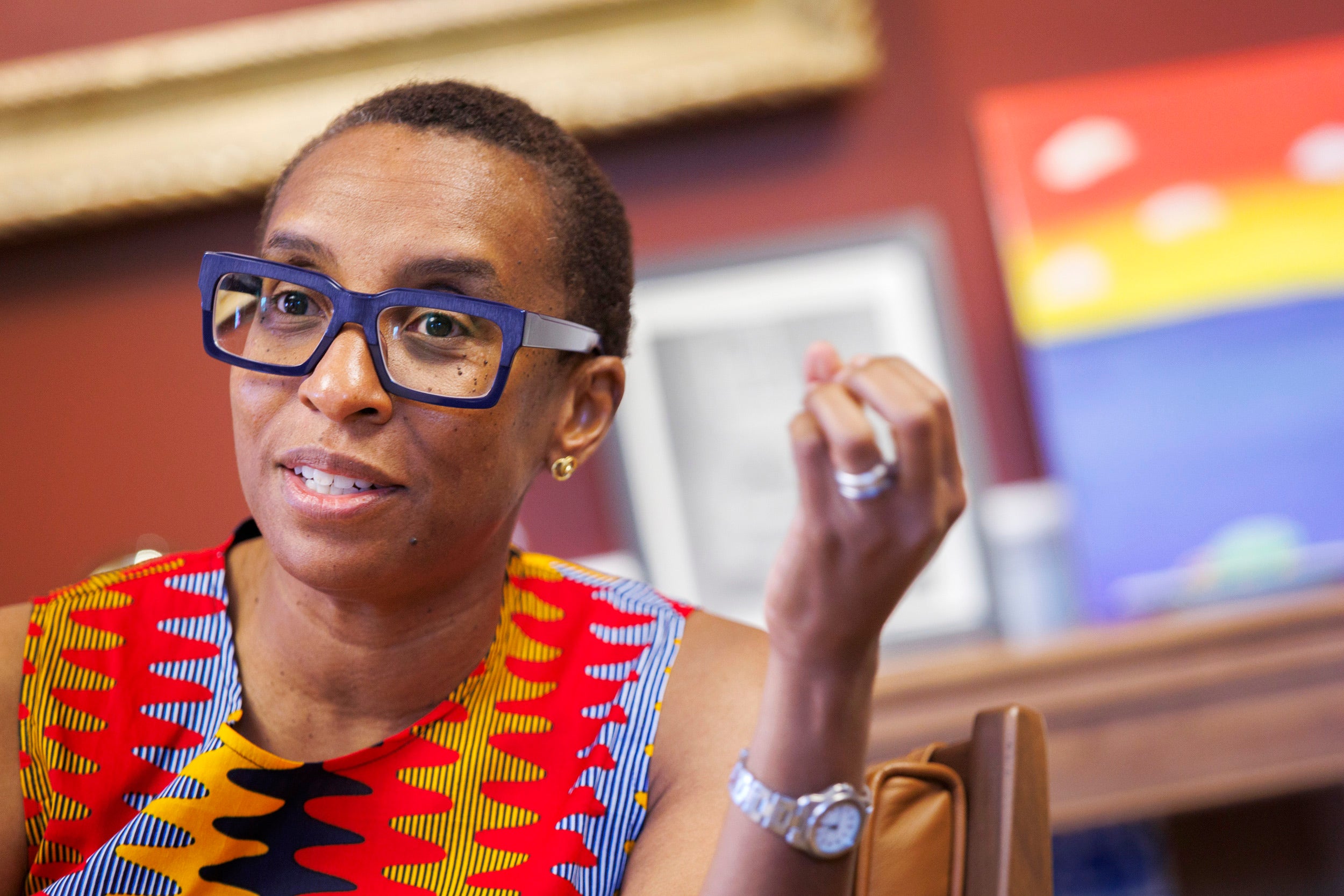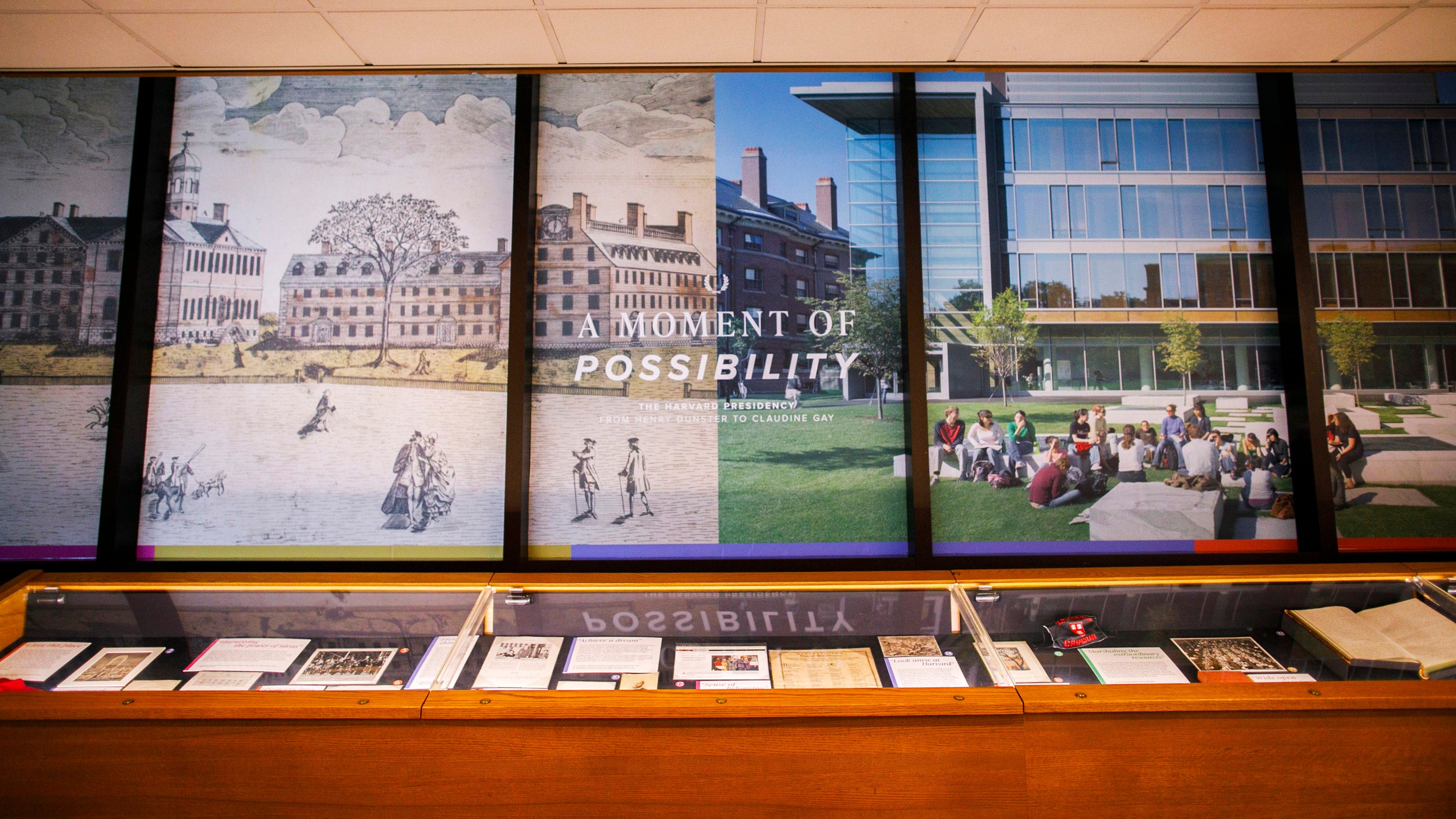
The Pusey Library exhibit “A Moment of Possibility: The Harvard Presidency from Henry Dunster to Claudine Gay” runs through June.
Photos by Stephanie Mitchell/Harvard Staff Photographer
‘A moment of possibility’
University Archives marks inauguration of Gay with displays focusing on history, evolution of Harvard presidency
The phrase “A moment of possibility” is highlighted in red.
Draped around columns in the Lammot du Pont Copeland Gallery in Pusey Library are transcripts of remarks made by Claudine Gay after the announcement of her appointment as the University’s 30th president. Some phrases are highlighted, connecting her words to Harvard’s present and future — “harnessing the power of ideas.”
To mark Gay’s inauguration the Harvard University Archives is celebrating the legacy of the University’s presidents with two special displays. The first is the Pusey Library exhibit titled “A Moment of Possibility: The Harvard Presidency from Henry Dunster to Claudine Gay,” which runs through June.
The second is a special viewing of the presidential insignia on Friday, directly following the inauguration.
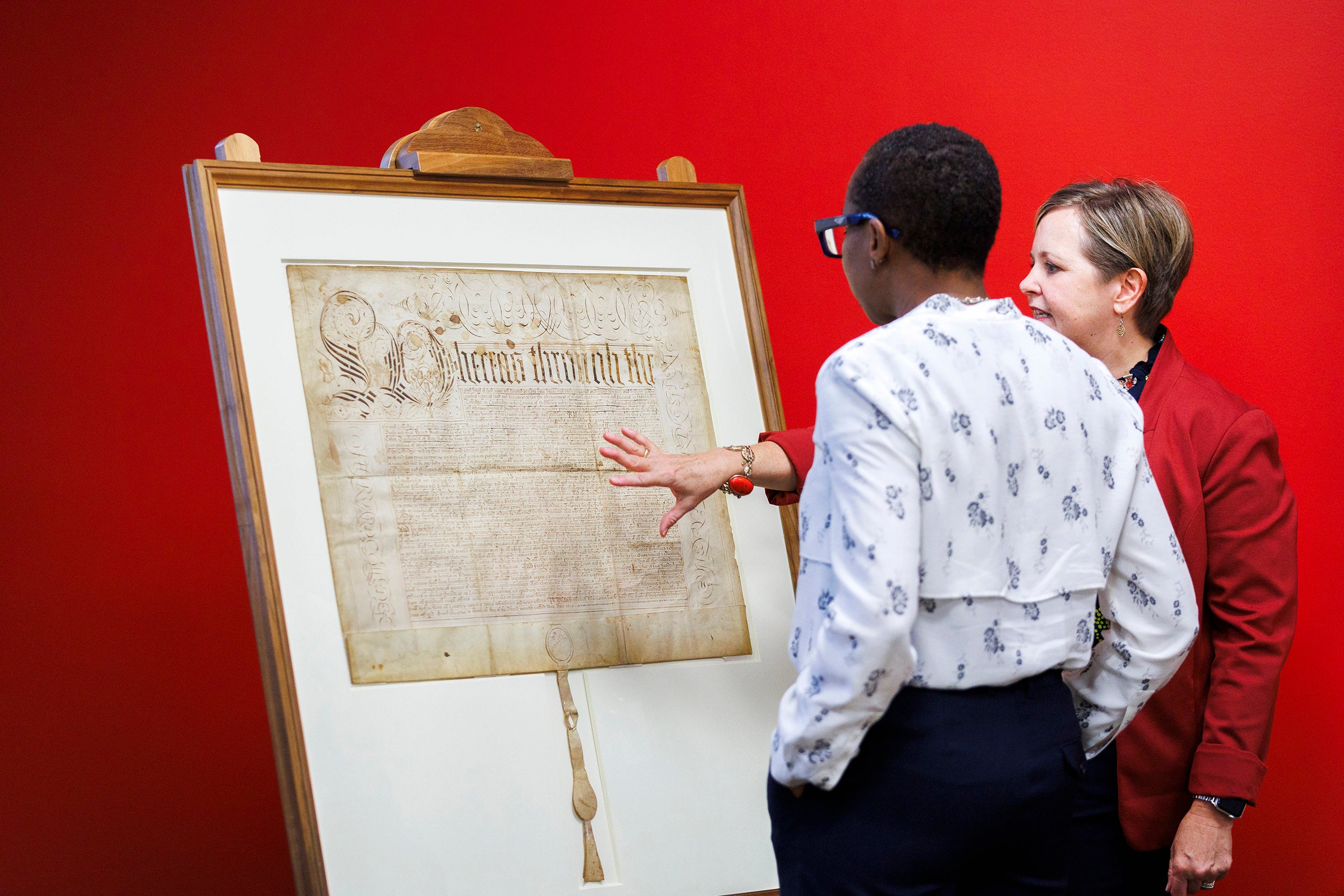
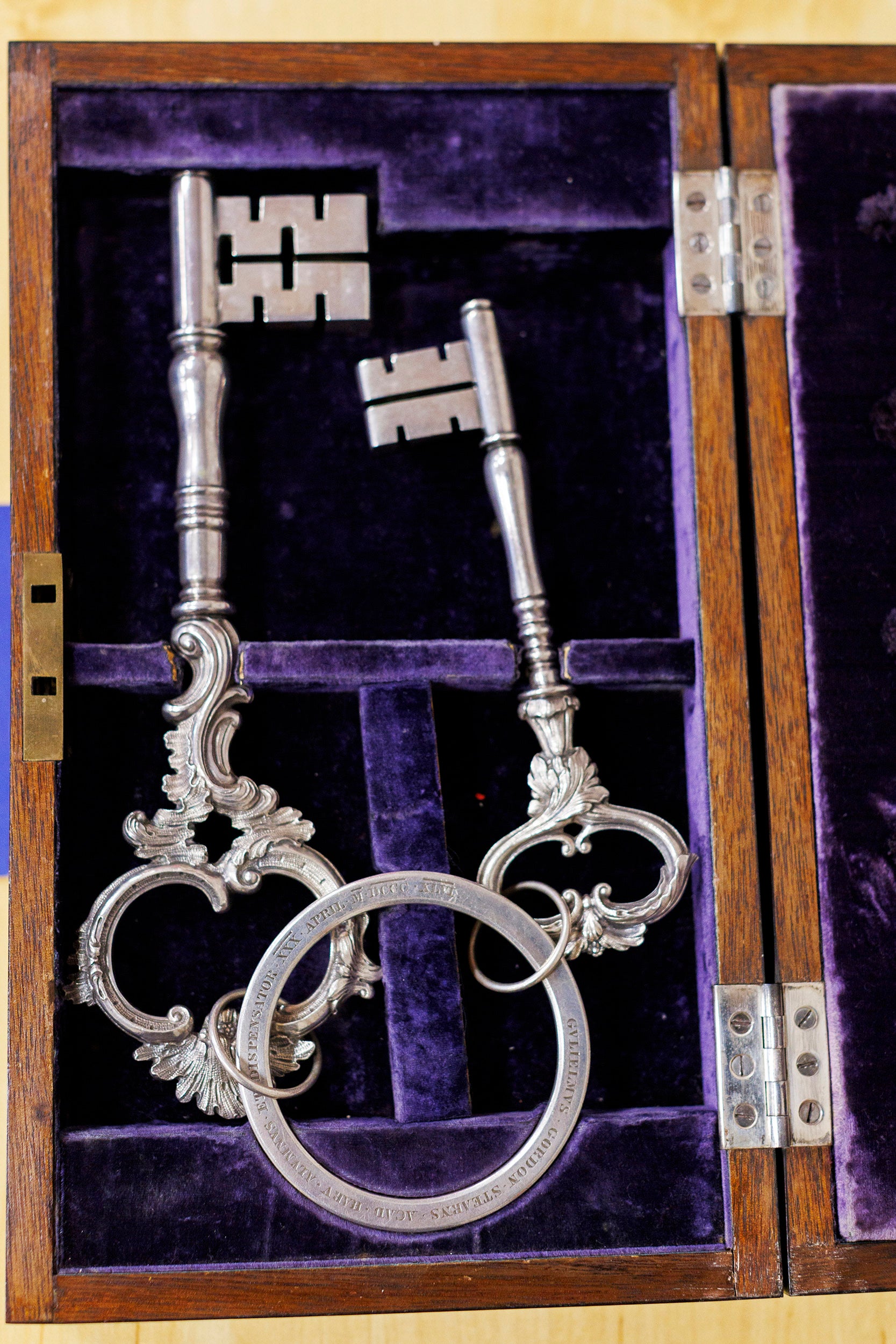
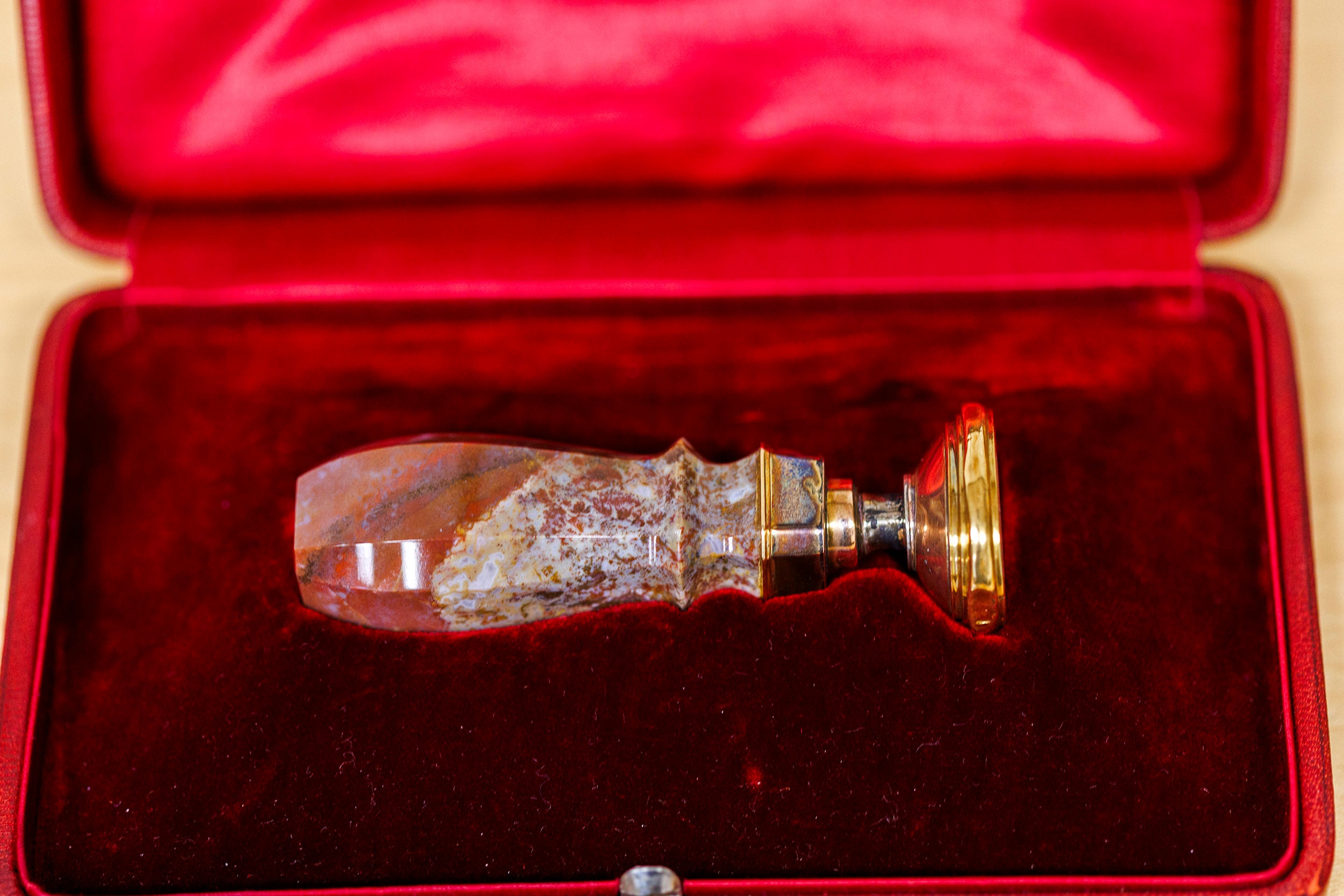
Insignia will be on display in the Harvard University Archives’ Reading Room from 4:30 to 6:30 p.m. on Friday, directly following the inauguration.
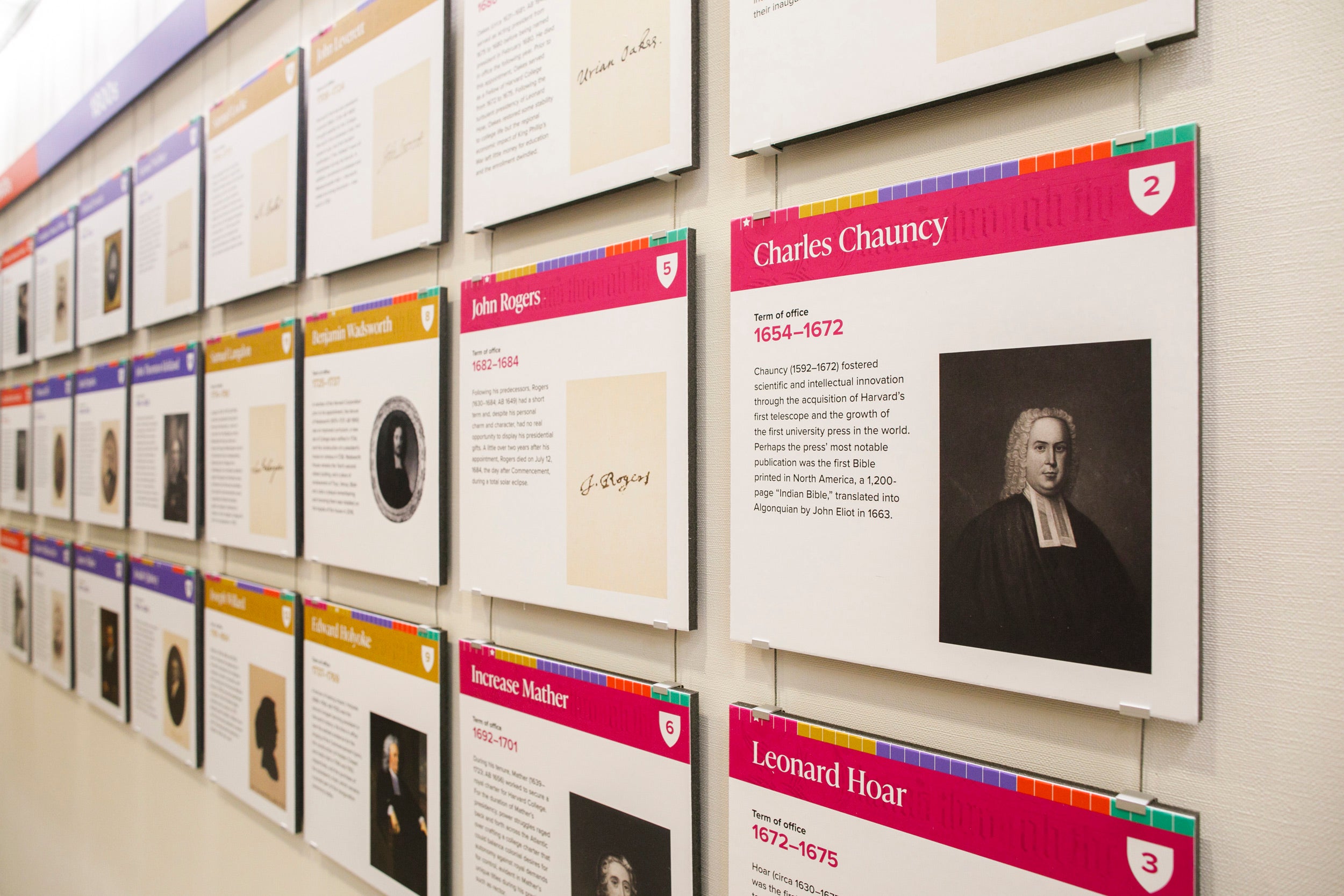
The exhibition, which is free and open to the public, explores the history and evolution of the office beginning with Dunster in 1640 to Gay, the first person of color and second woman to lead Harvard. The display includes a timeline of the 30 leaders alongside materials representing the legacies they left.
Notable inclusions include depictions of the early years of campus, such as an 1891 drawing of the Yard and one from 1819 of students protesting conditions of the dining hall. There’s even a spike from the roof of Massachusetts Hall — the oldest building on campus, designed and built between 1718 and 1720 by Harvard President John Leverett with input from his successor, Benjamin Wadsworth.
But there are also pieces that look beyond campus, as Harvard presidents have expanded the influence of the University. These include a photograph of teachers arriving for the Cuban Summer School by ship in 1900, and materials from the expansion of the Extension School. Materials document the admittance of both the first Black and first female students.
“Once we found things that we felt really strongly about including, we wanted them to work in concert with each other to provide the most complete picture of the legacies left by these individuals — to make sure that we were really addressing the scope and the breadth of what has been accomplished over these nearly 400 years,” Virginia Hunt, the University Archivist, said.
“Everything is wrapped up around her vision for the past, present, and future of Harvard.”
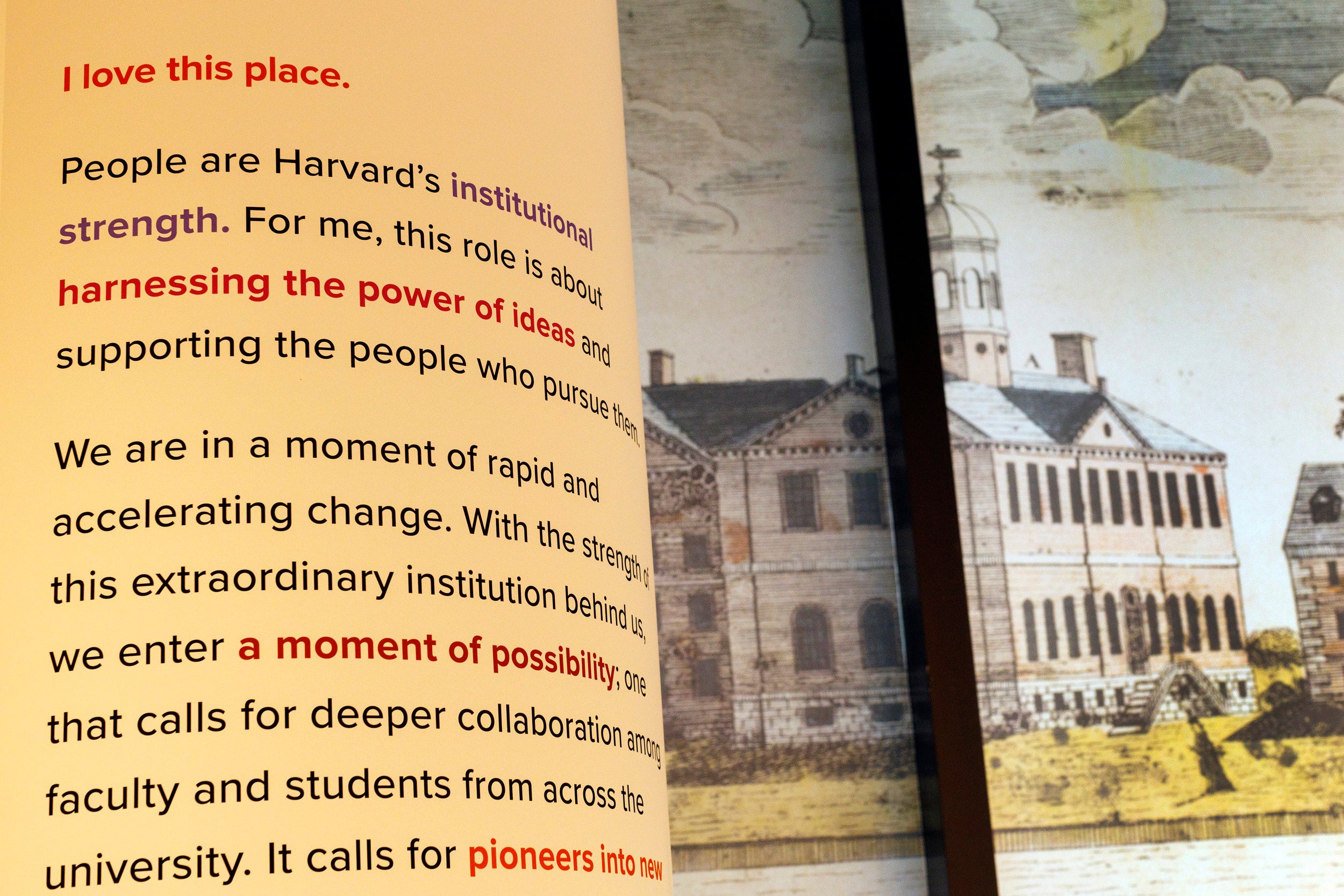
“The office of the president and the role of the president has transformed time and time again, from thinking very inwardly to now thinking of Harvard as this global entity that has an influence that goes so far beyond this campus and Cambridge and Boston more broadly,” added Sarah Martin, Associate University Archivist for Community Engagement.
There are 29 objects in the main display case of the exhibit — symbolic of the 29 presidents before Gay. Gay’s remarks on columns flanking the display make up the 30th piece.
“With the strength of this extraordinary institution behind us, we enter a moment of possibility,” Gay said. “One that calls for deeper collaboration across the University, across all of our remarkable Schools. An urgency for Harvard to be engaged with the world. And a need to bring bold, brave, pioneering thinking to our greatest challenges.”
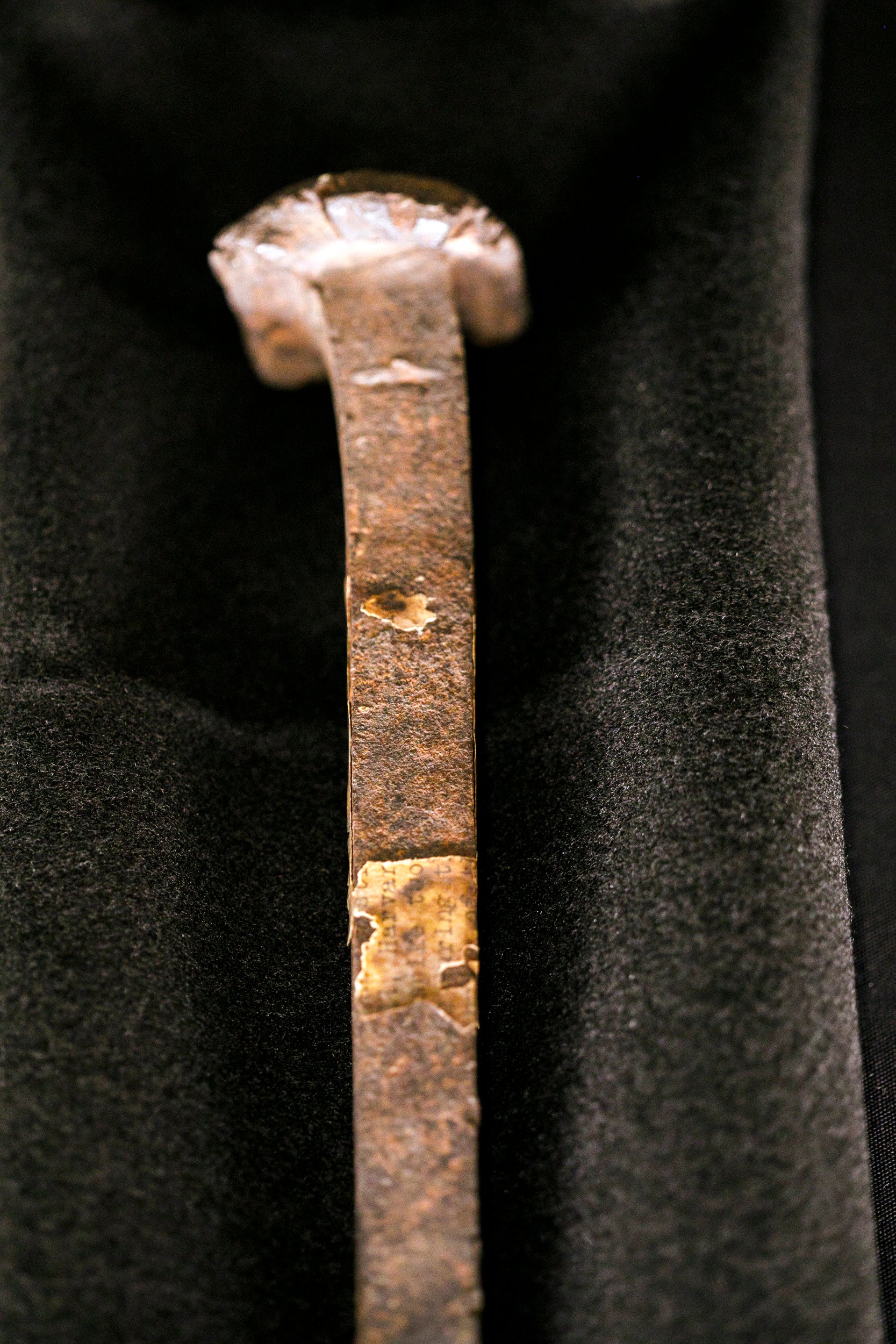
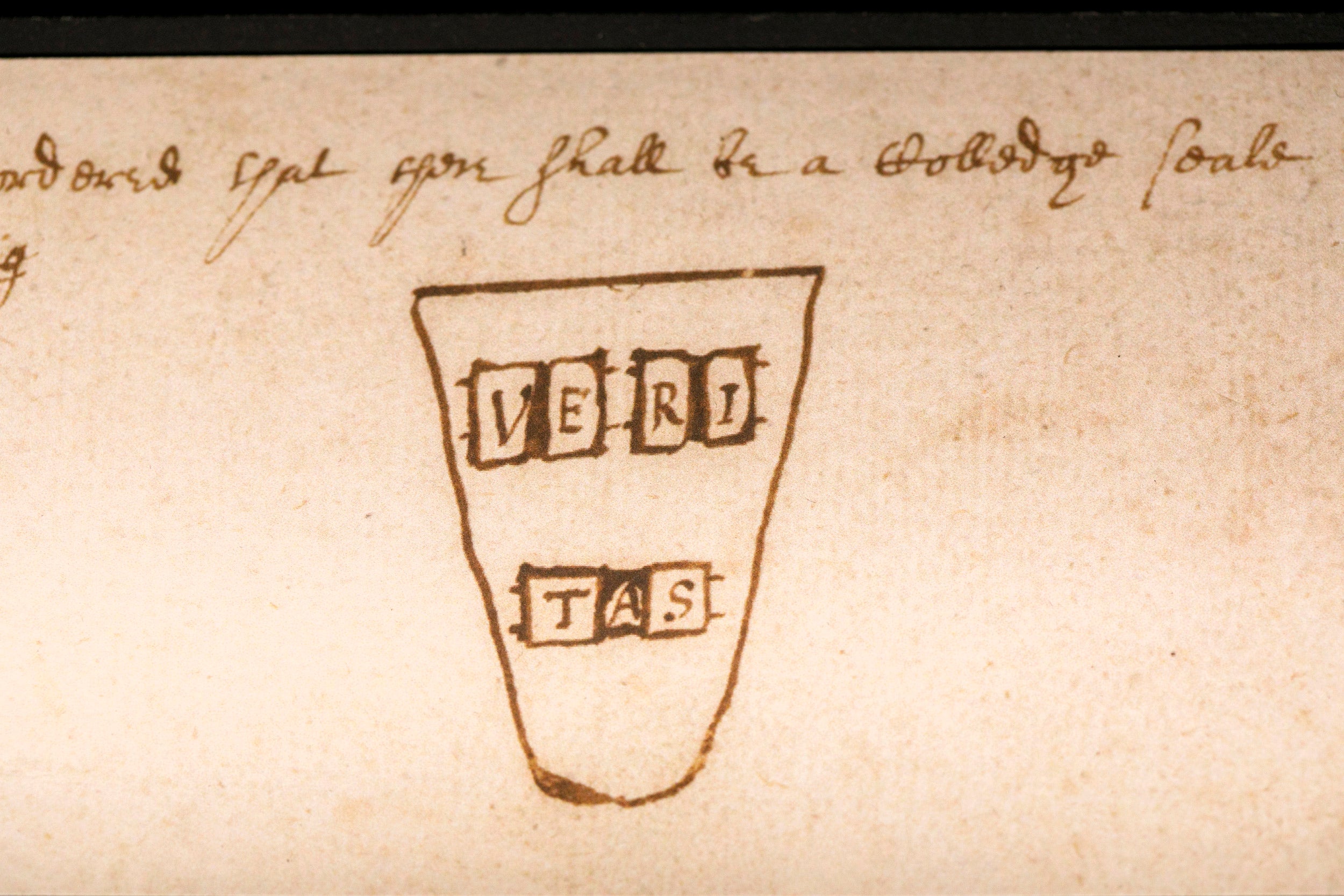
A spike from the roof of Massachusetts Hall circa 1720 and a sketch of the Harvard College shield, 1643.
The exhibition team wanted to make Gay’s words a centerpiece of the display.
“Everything is wrapped up around her vision for the past, present, and future of Harvard in her remarks,” Martin said.
As for the insignia, there are several pieces of ceremonial significance that are presented to incoming presidents during their inauguration. They are the Royal Charter of 1650 which established Harvard College, College Book No. 1 containing the first records of the University, ceremonial keys first presented to President Edward Everett, and three Harvard seals. Gay will be presented the items during her installation ceremony, which begins at 2 p.m. A livestream of the event is available online.
The insignia will be on display in the Harvard University Archives’ Reading Room in Pusey from 4:30 to 6:30 p.m. on Friday.
“We hope that people will be able to get closer and see some of the intricacies of these items a little bit more up close and personal,” Martin said.
The exhibition gallery is open every Monday through Friday 10 a.m. to 6 p.m.



